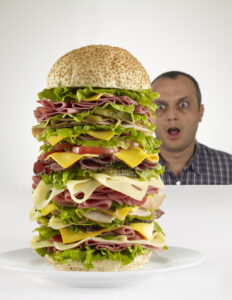 With Halloween soon approaching, parents brace for the yearly “Halloween Effect. This is the common belief that the sugary sweets and chocolates of Halloween cause children to bounce off the walls with hyperactivity.
With Halloween soon approaching, parents brace for the yearly “Halloween Effect. This is the common belief that the sugary sweets and chocolates of Halloween cause children to bounce off the walls with hyperactivity.
To compensate, parents often substitute these with “healthy” sugar-free gelatin, low-fat, sugar free yogurt, or low calorie fruit popsicles, which also happen to all come in a variety of neon-bright colors that kids can’t help but notice.
Unfortunately, conventional wisdom is mistaken. A whopping twelve double-blind, placebo-controlled studies have all failed to show any effect of sugar consumption on kids’ behavior – either those with ADHD or those without.
But parents know how their kids get amped up after the Halloween haul. So if it isn’t the sugar, what would it be? It turns out that those healthy alternatives of Halloween may contain a decidedly unhealthy trick hidden within the treat: the artificial food colors (AFCs).
A quick glance a sample of Halloween candy packaging reveals the kinds AFCs they contain.
|
Kid’s Snacks |
AFCs |
|
Yoplait: Light 90 calorie yogurt |
Red #40 |
|
Gatorade: Fruit Punch |
Red #40 |
|
General Mills: Trix Cereal |
Yellow #6, blue #1 |
|
Jello: Strawberry Flavor |
Red #40 |
|
Popsicle: Cherry Pop |
Red #40 |
|
Sunny Delight |
Yellow #5, and #6 |
|
M&Ms |
Blue #1, Yellow#6, Red#40, Yellow#5, blue#1 |
|
Red Vines |
Red #40 |
|
Hero Nutritionals: Yummy Bears Multi-vitamins |
Blue #1, Yellow#6, Red#40 |
The safety of AFCs and other food additives is regulated by the FAO (Food and Agriculture and Organization)/WHO (World Health Organization). A total of seven certified food colors are approved for use in the U.S.: Brilliant Blue (Blue #1), indigotine (Blue #2), fast green (Green #3), tartrazine (yellow #5), sunset yellow (yellow #6), erythrosine (Red #3) and allura red (Red #40b). Two other AFCs are approved for specific limited use: citrus red (Red #2) and Orange B.
While these are designated by the FDA to be “generally recognize as safe”, they have also been linked to hyperactivity in children in over 35 years of research studies.
In fact, an early pioneer was Dr. Benjamin Feingold, who proposed in 1973 that hyperactivity and learning problems were due to certain foods and food additives. Based on his clinical observations, he concluded that his subjects were sensitive to foods that contained natural salicylates, artificial colors and flavors.
By providing a diet free of these substances, his small study group showed that 60-70% of the children exhibited improved behaviors. Further study was needed to replicate these results with larger groups.
The most important recent work (2004 and 2007) support Dr. Feingold’s original work, directly linking AFCs with hyperactive behaviors in children.
One possible mechanism to explain how AFCs lead to behavioral changes is their ability to leach zinc from the body. Zinc is an essential mineral needed for brain function, and low zinc levels are found in children with ADHD. This might explain the multiple clinical studies showing that zinc levels are decreased in hyperactive children when given tartrazine (yellow #5) and sunset yellow (yellow #6). In children who were already hyperactive, ingestion of these AFCs are also associated with aggressive behavior and increased hyperactivity.
Given the dramatic increase in AFC consumption over the past 60 years, this becomes a serious public health concern. Neurotherapeutics. Jul 2012; 9(3): 599–609
This growing dataset inspired a petition to the FDA from the Center for Science in the Public Interest to review the evidence on AFCs and ADHD. However, despite these data the FDA concluded that further research was needed before making any statement at all.
By contrast, the European Parliament and the Council of the European Unionrequested that the food manufacturers avoid these additives in favor of natural food colors and flavors. In this document, they also asked manufacturers to remove several AFCs from foods and beverages.
While we wait on our food safety organizations to issue a statement, while we wait on the science to figure itself out, what’s a busy parent to do with bags of children’s Halloween candy brightened up with more AFCs each year?
Very simply, look for them in the ingredients list, and then choose something else. And, if the data are correct, doing this for your kids may result in less of the bouncing-off-the-walls Halloween effect this year.


